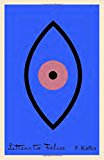
Letters To Felice PDF
Preview Letters To Felice
Franz Kafka met Felice Bauer in August 1912, at the home of his friend Max Brod. Energetic, down-to-earth, and life-affirming, the twenty-five-year-old secretary was everything Kafka was not, and he was instantly smitten. Because he was living in Prague and she in Berlin, his courtship was largely an epistolary one - passionate, self-deprecating, and anxious letters sent almost daily, sometimes even two or three times a day. But soon after their engagement was announced in 1914, Kafka began to worry that marriage would interfere with his writing and his need for solitude.
“Some of the most heartrending ‘love letters’ ever written.”
- Morris Dickstein, The New York Times Book Review
The more than five hundred letters Kafka wrote to Felice - through their breakup, a second engagement in 1917, and their final parting in the fall of that year, when Kafka began to feel the effects of tuberculosis that would eventually claim his life - reveal the full measure of his inner turmoil as he tried, in vain, to balance his desire for human connection with what he felt were the solitary demands of his craft.
"Kafka’s correspondence with Felice has all the earmarks of his fiction - the same nervous attention to minute particulars, the same paranoid awareness of shifting balances of power, the same atmosphere of emotional suffocation - combined, surprisingly enough, with moments of boyish ardour and delight." - Michiko Kakutani, The New York Times
Franz Kafka was born in 1883 in Prague, where he lived most of his life. He published only a few short stories, including “The Metamorphosis,” “The Judgment,” and “The Stoker.” He died in 1924, before completing any of his full-length novels. At the end of his life, Kafka asked his lifelong friend and literary executor Max Brod to burn all his unpublished work. Brod overrode those wishes.
